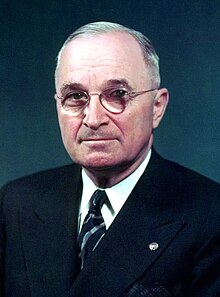📖 Presidential Profile
Comprehensive overview of leadership, policies, and historical significance
📋 Biography & Political Journey
From Haberdasher to Commander-in-Chief
Harry S. Truman’s path to the presidency was unlikely and unprecedented in American politics. A former **haberdasher from Missouri** with only a high school education, Truman entered politics through the Kansas City Democratic machine and served in the Senate before being selected as Roosevelt’s running mate in 1944. When Roosevelt died just 82 days into his fourth term, Truman found himself leading a nation at war with little preparation for the enormous responsibilities ahead. His humble background and direct communication style would become his political strengths.
Ending World War II and Atomic Decisions
Truman faced the monumental decision of whether to use the newly developed **atomic bomb** against Japan, ultimately authorizing the bombings of Hiroshima and Nagasaki in August 1945. This decision, made with limited consultation and under enormous pressure to avoid a costly invasion of Japan, ended World War II but initiated the nuclear age. Truman also oversaw the complex **demobilization** of American forces and the transition from wartime to peacetime economy, managing the challenges of returning veterans and converting defense industries.
Cold War Architecture and Containment
Truman’s presidency established the fundamental framework of American Cold War policy through the **Truman Doctrine** and **Marshall Plan**. His administration committed America to containing Soviet expansion globally, providing aid to Greece and Turkey, and rebuilding Western Europe through massive economic assistance. The creation of **NATO** in 1949 formalized America’s commitment to European security, while the National Security Act of 1947 reorganized American defense and intelligence capabilities for the long struggle ahead.
The Korean War and MacArthur Controversy
Truman’s decision to intervene in Korea in 1950 without Congressional approval set a precedent for presidential war powers that would influence American foreign policy for decades. The conflict became increasingly unpopular as it dragged on without clear victory, and Truman’s **firing of General Douglas MacArthur** in 1951 created a major political crisis. MacArthur’s popularity and criticism of Truman’s limited war strategy led to Congressional hearings and damaged Truman’s approval ratings. Critics argued that Truman’s micromanagement of military strategy prolonged the conflict unnecessarily.
The Buck Stops Here Sign
Truman kept a sign on his Oval Office desk reading **”The Buck Stops Here”** – a phrase that became synonymous with presidential responsibility. However, the sign led to an amusing incident during a meeting with congressional leaders when one senator misread it and asked why Truman had a sign about **making money on his desk**. Truman had to explain that “buck” referred to responsibility, not dollars, leading to an awkward moment of confusion. The sign itself was a gift from a friend, and Truman would often point to it during difficult moments, though staffers noted he sometimes seemed to forget it was there when photographers weren’t present.
Humor & Jokes
Dewey Defeats Truman
The 'Dewey Defeats Truman' headline was so wrong, it became the gold standard for premature…
Read More →Greatest Wins
⚖️ Desegregation of the U.S. Armed Forces
Executive Order 9981 ended racial segregation in the military, marking a pivotal moment in the…
Read More →Epic Fails
⚖️ Federal Seizure of Steel Mills
Truman's wartime takeover of private steel companies was ruled unconstitutional, creating a landmark Supreme Court…
Read More →